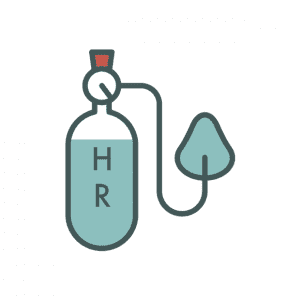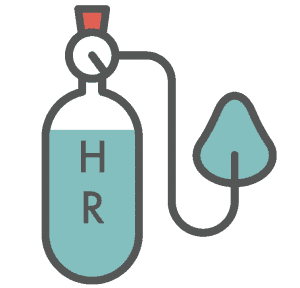This guide will help you plan your organisation’s next steps as lockdown measures ease or following a period of furlough for an employee.
The CIPD is urging businesses to ensure they can meet three key tests before bringing their people back to the workplace and Meraki HR would encourage its clients to follow these 3 same principles;
- Is it essential? If people can continue to work from home employers should at least consider continuing to do that for the foreseeable future. If they cannot work from home, is their work deemed essential to your business operation or could the business continue to use the Government’s Job Retention Scheme for longer, giving them the time needed to put safety measures and clear employee guidance and consultation in place?
- Is it sufficiently safe? Employers have a duty of care to identify and manage risks to ensure that the workplace is sufficiently safe to return to. Employers should take their time with gradual returns to work to test health and safety measures in practice and ensure they can work with larger numbers before encouraging more of their workforce back.
- Is it mutually agreed? It’s vital that there is a clear dialogue between employers and their people so concerns, such as commuting by public transport, can be raised and individuals needs and worries taken into account. There will need to be flexibility on both sides to accommodate different working times or schedules as ways of managing some of these issues.
Returning to the workplace
How you manage a return to the workplace will depend on the type of closure arrangements you have been operating. The business may not have been trading at all (with all staff furloughed), or it may have been trading on a limited basis (with some staff furloughed, some working from home or in the workplace). Alternatively, only ‘essential’ workers may be in work or the business may be trading fully with all staff in the workplace or with some working from home.
Whichever of these is closest to your individual business, there are some common issues you will need to address.
All workplaces need to observe the Government’s lockdown or social distancing guidance which seems highly likely to continue in some guise for some time to come; the Prime Minister indicated that lockdown measures in some form will stay in place for now but may be eased from mid February, but who knows, as we know now from the past 10 months, that anything can happen, so it’s best to be prepared!
Whatever happens as and when you do return to work, we are recommending that employers follow the 3 key principles already stated, Is it Essential, Is it Safe and has it been Mutually Agreed? This will involve taking into account many factors including the size and nature of their workplace, numbers of vulnerable staff or those who live with vulnerable people, caring responsibilities, public transport dependency, local outbreaks and further peaks. For example, an employer with a large premises and car park may be able to fully implement social distancing and minimise employees’ local transport use, whereas an employer with smaller premises may feel social distancing is difficult in the workplace.
You will also need to consider your stance on vaccinations as a business and whether it will be a requirement for staff to be vaccinated, which will of course depend on the work they do. There could be all sorts of legal issues surrounding this matter, so tread carefully and pleas seek advice from us before making any rash statements or judgements in this area. We are already aware of the tensions that those on furlough versus those that weren’t, and I can see that the topic of to be vaccinated or not, could also cause issues amongst staff.
So here are some options to consider when lockdown measures are eased or lifted;
1. Continue working from home
Employers can use their coronavirus specific risk assessments to assist in their decision making process. This will entail considering the factors referred to above, including the feasibility of implementing social distancing and local outbreaks (if any). As employers with workforces that cannot work from home have found, adapting premises to accommodate all staff returning on a socially distanced basis is highly challenging. Employers who have been mostly closed with productive and successful homeworking may simply continue this to assess if there is a further peak of increased coronavirus cases.
2. Delegate the decision to employees
Employers can partially re-open offices/work spaces, asking employees if they would like to attend the office or place of work.
As part of their coronavirus specific risk assessments many employers have already asked staff to confirm if they would like to return to the office and can assess likely numbers as part of any social distancing planning. The office based numbers can be restricted either by the employees’ choice or by the employer placing a cap on numbers.
This approach enables employers to slowly introduce their proposed COVID-19 secure working practices with a reduced workforce in place but may lead to resentment between those who are coming into the workplace and incurring travel costs and those who are working from home.
3. Operate a working from home/office or workplace hybrid
There would be some form of a rota introduced to ensure you don’t have more people in the office or workplace than your risk assessment has identified, whilst others continue to work from home, but perhaps come into the office one, two or three times a week. This allows those who have not enjoyed working from home or have felt islolated and lonely back to the office safely.
4. Fully re-open
Employers may be able to re-open fully if lockdown measures are eased. Employers will obviously need to follow social distancing and COVID-19 secure working practices.
This will benefit staff who have had mental health difficulties at home but means the employer will have to deal with employees who have reasons for wanting to remain at home and will also entail full compliance with the extensive social distancing and COVID19 secure guidance measures likely to be in place.
5. Remain completely closed for longer
Some employers may decide to remain completely closed with staff on furlough or all staff working from home. This is possible whilst the furlough scheme is operational until the end of April 2021.
This may have a negative impact on business and may simply delay preparation for social distancing at work which will be required at the point of reopening, unless the guidance changes.
A guide such as this cannot possibly cover every business situation, but it should help you think about the sort of issues that all businesses will need to consider as restrictions begin to be relaxed. However, if you want to discuss putting any policies or procedures in place surrounding returning to work, then please don’t hesitate to get in touch, or you can book a call with us here; https://bit.ly/CallMerakiHR
DISCLAIMER: The materials in this guidance are provided for general information purposes and do not constitute legal or other professional advice. While the information is considered to be true and correct at the date of publication, changes in circumstances may impact the accuracy and validity of the information. Meraki HR is not responsible for any errors or omissions, or for any action or decision taken as a result of using the guidance. You should consult an HR professional or legal adviser regarding your specific circumstances before taking action.





















